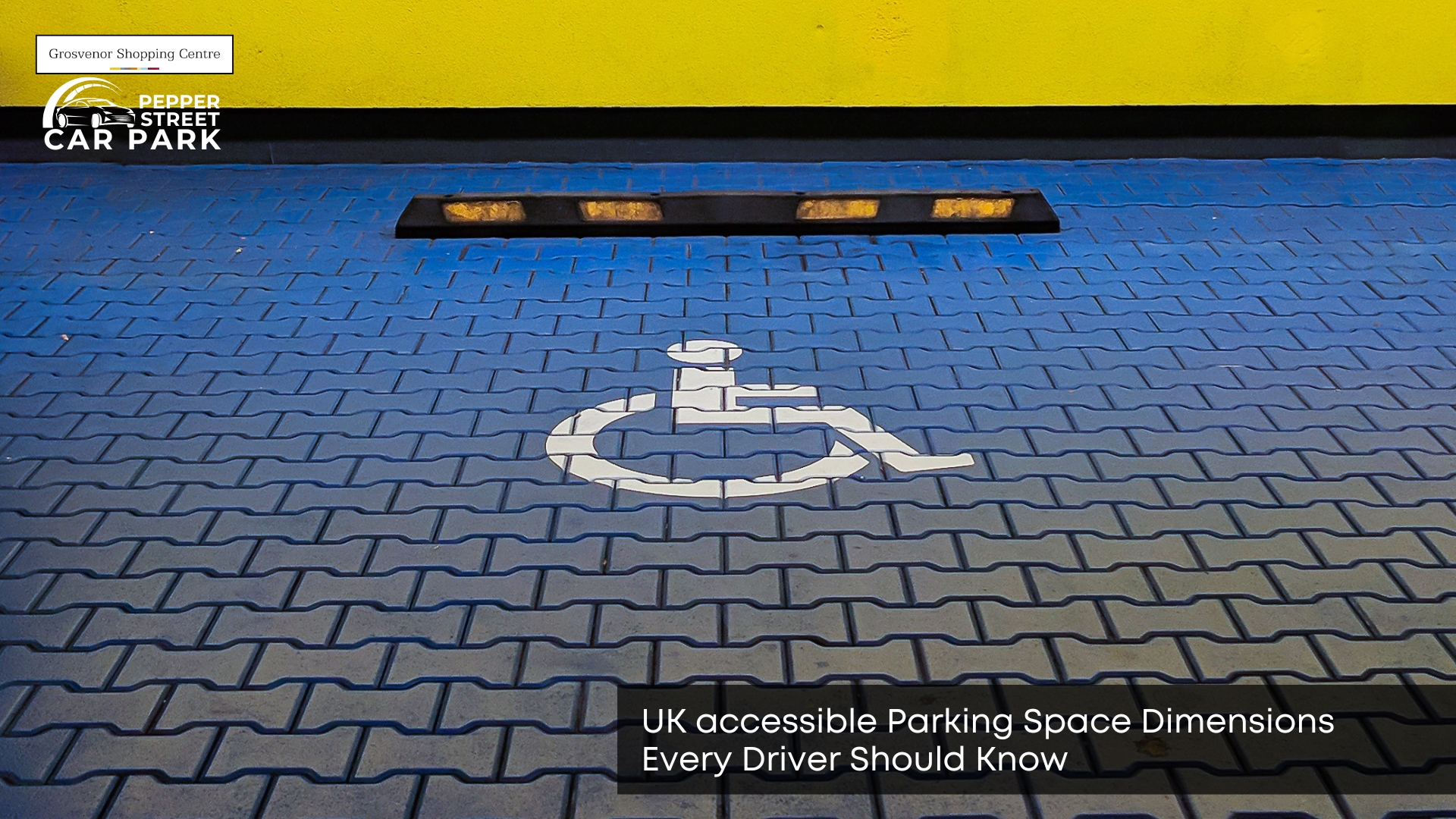Knowing the correct dimensions for accessible parking spaces in the UK is crucial for both accessibility and legal compliance. These spaces are designed to provide easier access for blue badge holders and others with mobility challenges. Whether you’re designing a car park, enforcing rules, or simply trying to be a courteous driver, understanding the correct size is crucial, as it ensures safe movement around the vehicle and provides enough room for ramps or wheelchairs. Once you know the dimensions, it’s easier to see why proper markings make such a difference.
What is the Standard Size for an accessible Parking Space in the UK?
The standard size for an accessible parking space in the UK is 2.4 metres wide by 4.8 metres long. This is the same as a regular parking bay, but it includes an additional access area. The surrounding space is key, not just the bay itself. That’s why understanding the full layout is essential for safety and convenience.
How Much Extra Space Is Required for Access
An accessible parking space must have at least 1.2 metres of clear space on either side for wheelchair access. There should also be a 1.2 metre safety zone at the rear if the space is parallel to a footpath. These added areas help people open doors fully, use ramps, and move comfortably. This extra room makes all the difference in real-life situations.
Do Car Parks Have to Follow These Dimensions by Law
Yes, public and commercial car parks must follow UK government guidelines on disabled parking dimensions. These are part of the Equality Act and British Standards, such as BS 8300. Failing to follow them can be seen as discrimination against disabled users. Compliance is not just a legal duty; it’s a sign of respect and inclusion.
What Markings Should Be Used for Disabled Spaces
Disabled parking bays should be marked with the yellow wheelchair symbol and bold white outlines. Some include the words “DISABLED” in capital letters for clarity. These markings help all drivers recognise the space and avoid parking there if not permitted. Clear visuals also reduce confusion during busy times.
Are There Rules for Where Disabled Bays Should Be Placed
Yes, accessible parking spaces should be placed near entrances or lifts to minimise walking distance. Ideally, they should be located on level ground with smooth surfaces and dropped kerbs. Good placement means less effort and more comfort for those with limited mobility. The layout should reflect thoughtful planning, not just legal compliance.
Can Any Driver Use a Disabled Parking Bay Temporarily
No, only drivers with a valid Blue Badge are allowed to use an accessible parking space. Using one without permission can result in fines or even vehicle impoundment. Temporary stops, even for a moment, are not allowed unless authorised. Being mindful of these rules shows awareness of others’ needs.
How Many Disabled Spaces Should a Car Park Have
UK regulations require that at least 6 percent of spaces in a car park be designated for disabled use. In larger car parks, this percentage may reduce slightly, but the layout must still ensure easy access. Having enough bays means fewer struggles for those who rely on them. This is especially important in hospitals, shopping centres, and public buildings.
Do Disabled Parking Bay Sizes Vary in Private Car Parks
Yes, private car parks may vary slightly, but most follow the same UK accessible parking space dimensions. Some may be more generous, especially in newer developments. While not always strictly enforced, good design usually aligns with national guidance. Choosing the best practice improves accessibility for all. Some may be more generous, especially in newer developments where restricted parking signs are clearly marked.
Why Should Every Driver Understand These Dimensions
Every driver should be aware of the dimensions of accessible parking spaces in the UK to park responsibly and avoid blocking access to these spaces. It’s not just about legality, but also about showing empathy and respect for fellow drivers. Knowing how these spaces work helps prevent frustration and ensures fair use. Awareness of others begins with understanding the basics. Awareness of others begins with understanding the basics and knowing where to park in Chester responsibly.
Accessible Parking Starts With Proper Space
Accessible parking spaces in the UK are more than just wider bays. They are lifelines for people who need them to move safely and independently. By following the correct dimensions, markings, and rules, car park operators and drivers can help make public spaces more inclusive. Understanding these details helps ensure that every journey starts and ends with dignity. A well-maintained Chester car parking site should always support these standards for a smoother experience.


Leave a Reply